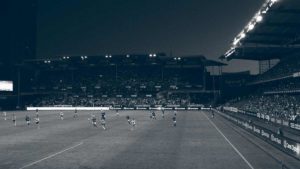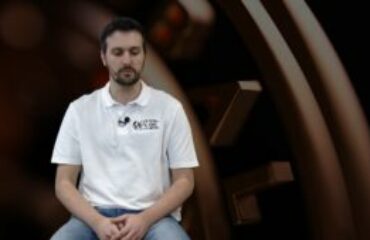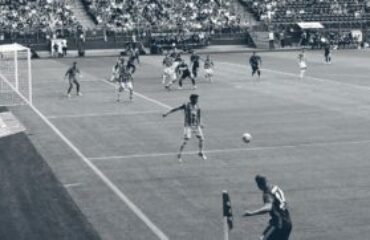1. Local dynamic stability of the lower-limb as a means of post-hoc injury classification
Larson J, Perkins E, Oldfather T, Zabala M. Department of Mechanical Engineering, Auburn University, Auburn, Alabama, United States of America
PLoS One. 2021 Jun 4;16(6):e0252839. doi: 10.1371/journal.pone.0252839
This study used the Local Dynamic Stability (LDS), a multivariate logistic regression of the kinematic trajectories of repetitive vertical jumps in 27 female collegiate soccer and basketball athletes, with 7 subjects having sustained previous knee injury requiring surgery and 20 subjects with no history of injury. LDS correctly identified 84% of previously injured and uninjured subjects, while no statistical difference in kinematic position at maximum knee flexion during all jumps was found, suggesting that future studies should look specifically at LDS with respect to injury prevention as it cannot be effectively inferred from kinematics isolated values.
2. Anterior cruciate ligament injury in elite football players: video analysis of 128 cases
De Carli A, et al. Orthopaedic unit and Kirk Kilgour Sports injury Center, S. Andrea Hospital, University of Rome Sapienza, Rome, Italy – angelo.decarli@gmail.com.
J Sports Med Phys Fitness. 2021 Jun 1. doi: 10.23736/S0022-4707.21.11230-7
Video analysis of 128 competitive matches with ACL injury events was performed through Wyscout.com® from August 2009 to January 2020. Most of the injuries occur during the first thirty minutes after entering the field. It therefore seems unlikely that fatigue will play an important role. Valgus external rotation, eccentric muscular contraction, loss of the center of gravity, attempting to recover the ball are the most frequent scenario.
3. Effects of including endurance and speed sessions within small-sided soccer games periodization on physical fitness
Castillo D, Raya-González J, Sarmento H, Clemente FM, Yanci J. Faculty of Health Sciences, Universidad Isabel I, Burgos, Spain
Biol Sport. 2021 Jun;38(2):291-299. doi: 10.5114/biolsport.2021.99325
In this study 16 First Division players of a European League were randomly assigned to perform only SSG periodization (G-SSG group) or to add 6 endurance and speed training sessions to the SSG (ES-SSG group) during 6 weeks. The G-SSG group showed a large improvement in the Yo-Yo Intermittent Recovery Test level 1 YYIR1 performance, whereas no significant changes were observed for the ES-SSG group. In addition, no significant differences in sprint performance at 5 and 10 m intervals up to 40 m were observed between groups. So, the 6-week SSG training supported with only six endurance and speed training sessions was no more effective than well-organized SSG alone for improving running endurance in professional soccer players.
4. Effect of formation, ball in play and ball possession on peak demands in elite soccer
Riboli A, Semeria M, Coratella G, Esposito F. Atalanta B.C., Performance Department, Bergamo, Italy
Biol Sport. 2021 Jun;38(2):195-205. doi: 10.5114/biolsport.2020.98450
This study examined the 1-min most demands passages (MDP) in 18 official matches of the Italian Serie A. For very high speeds and Acc/Dec, 1-min MDPs showed fourfold higher locomotor requirements than 90-min, whereas positional and playing formation differences were observed, that should be accounted for when conditioning players for peak demands in matches.
5. Change of Direction Speed and Technique Modification Training Improves 180° Turning Performance, Kinetics, and Kinematics
Dos’Santos T, Thomas C, McBurnie A, Comfort P, Jones PA. Musculoskeletal Science and Sports Medicine Research Centre, Department of Sport and Exercise Sciences, Manchester Metropolitan University, Manchester M15 6BH, UK
Sports (Basel). 2021 May 24;9(6):73. doi: 10.3390/sports9060073
This study subjected 13 male multidirectional sport athletes to a 6-week training of change of direction speed and technique modification. Compared to a control group, turning time displayed small to large improvements, associated with increased mean horizontal propulsive force, more horizontally orientated final foot contact propulsive force with more pelvic rotation, and more braking force, velocity reduction and hip flexion at the penultimate foot contact.
6. A Comparison of Match Demands Using Ball-in-Play versus Whole Match Data in Professional Soccer Players of the English Championship
Mernagh D, et al. Queens Park Rangers Football Club, London W12 7PJ, UK
Sports (Basel). 2021 May 26;9(6):76. doi: 10.3390/sports9060076
Effective playing time per soccer game is typically <60 min. When the ball is out of play, players spend time repositioning themselves, which is likely less physically demanding. Consequently, reporting whole match demands may under-report the physical requirements of soccer players. In this study, Ball in Play BiP data of 20 professional soccer players over 8 professional soccer matches in the English Championship showed that whole match metrics were significantly lower than BiP metrics, with no significant differences between positions.
7. Alpha-Actinin-3 Deficiency Might Affect Recovery from Non-Contact Muscle Injuries: Preliminary Findings in a Top-Level Soccer Team
Rodas G, Moreno-Pérez V, Del Coso J, Florit D, Osaba L, Lucia A. Medical Department, Futbol Club Barcelona, 08028 Barcelona, Spain.
Genes (Basel). 2021 May 18;12(5):769. doi: 10.3390/genes12050769
This study assessed the R577X polymorphism in the gene encoding α-actinin-3 (ACTN3) In 46 (22 male and 24 female) players from a top-level professional soccer team during 5 years, finding that the XX genotype showed a trend towards a higher risk of muscle injury and a significantly increased time to return to play (36 ± 26 days, vs. 20 ± 10 and 17 ± 12 days for RR and RX, respectively).
8. Association Between Injury Mechanisms and Magnetic Resonance Imaging Findings in Rectus Femoris Injuries in 105 Professional Football Players
Geiss Santos RC, et al. Aspetar Orthopedic and Sports Medicine Hospital, Doha, Qatar
Clin J Sport Med. 2021 May 26. doi: 10.1097/JSM.0000000000000935
This study of 105 rectus femoris injuries in male professional football players found that kicking was the injury mechanism in 54.3%, sprinting in 30.4% and 15.2% were classified as others. 19.05% were free tendon injuries, 63.8% in the myotendinous junction and/or intramuscular tendon, and 17.1% peripheral myofascial located injuries. All free tendon injuries were related to kicking, so sprinting was never associated with injury to the proximal free tendon.
9. The Efficacy of Heat Acclimatization Pre-World Cup in Female Soccer Players
Meylan CMP, Bowman K, Stellingwerff T, Pethick WA, Trewin J, Koehle MS. Physical Performance Department, Canada Soccer, Ottawa, ON, Canada
Front Sports Act Living. 2021 May 25;3:614370. doi: 10.3389/fspor.2021.614370
This study assesses the efficacy of a 14-day field-based heat acclimatization (HA) training camp in 16 international female soccer players, with 8 days moderate HA (22. 1°C), 6 days high HA (34.5°C), and 11 days of post-HA (18.2°C). Plasma volume non-significantly increased by 7.4% ± 3.6%. Resting core temperature dropped significantly. HR recovery after a submaximal running test and 4v4 Small Sided Game increased. All of them were physiological changes beneficial to soccer performance.
10. Assessment of Muscle Volume Using Magnetic Resonance Imaging (MRI) in Football Players after Hamstring Injuries
Mühlenfeld N MD et al. Department of Trauma, Hand and Reconstructive Surgery, Goethe University Frankfurt, Frankfurt am Main, Germany
Eur J Sport Sci. 2021 Jun 10:1-17. doi: 10.1080/17461391.2021.1942226
This study evaluated the loss of muscle volume in 20 recreational football players three and six weeks after type3a (minor partial muscle tear) and type3b (moderate partial muscle tear) hamstrings injuries. The injured hamstrings lost 6.5%, the healthy hamstrings lost 2.1% of muscle volume after six weeks. The quadriceps in the injured leg lost 3.8% and 4.5%. Muscle volume loss inversely correlated with activity levels in the healthy leg for the quadriceps and the hamstrings, as well as the quadriceps in the injured leg, but not for the injured hamstrings.
11. Finding Neymar: The Role of Colour in the Detection and Discrimination of Football Kits
Burnell L, Thompson P. University of York, UK
Perception. 2021 Jun 9:3010066211019370. doi: 10.1177/03010066211019370
Two experiments investigated how kit variations affect the search of teammates: Experiment 1 confirmed that discriminability is slower when playing in crossed kits (e.g., red shirts-blue shorts vs. blue shirts-red shorts), versus uniform kits (e.g., all red vs. all blue). Experiment 2 found that there is significant confusion when both teams wear the same-coloured shorts. Based on these findings, the authors suggest changes to the Laws of the game concerning kit colours.
12. Return-to-Play Times and Player Performance After ACL Reconstruction in Elite UEFA Professional Soccer Players: A Matched-Cohort Analysis From 1999 to 2019
Forsythe B, Lavoie-Gagne OZ, Forlenza EM, Diaz CC, Mascarenhas R. Midwest Orthopaedics at Rush, Division of Sports Medicine, Chicago, Illinois, USA
Orthop J Sports Med. 2021 May 28;9(5):23259671211008892. doi: 10.1177/23259671211008892
51 players from 1 of the 5 elite Union of European Football Associations (UEFA) soccer leagues who suffered a complete ACL rupture between 1999 and 2019. 41 players (80%) returned to play after ACL rupture, with 6 (12%) experiencing a subsequent ipsilateral or contralateral ACL tear. The mean (±SD) RTP time for soccer players after ACLR was 216 ± 109 days (26 ± 18 games). Injured athletes played significantly fewer games and minutes per season and recorded inferior performances for 2 seasons after their injury. However, the game performance of injured players equaled or exceeded that of their matched controls by season 3 after injury, with the exception of attackers, who demonstrated a continued decline in performance.





